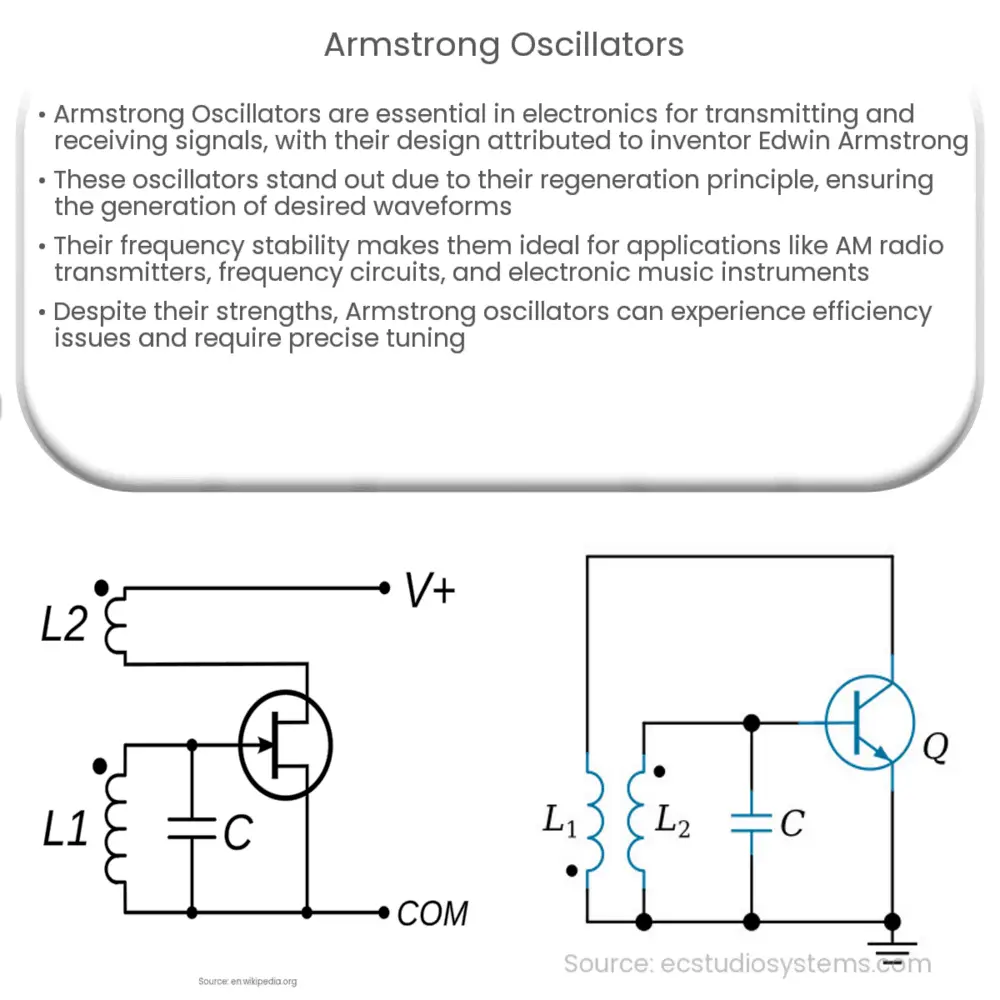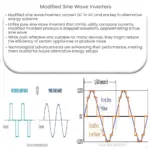Explore the Armstrong Oscillator’s design, working principle, applications, advantages, and limitations. Dive into the world of electronics!”

Introduction to Armstrong Oscillators
The world of electronics and communication is filled with different types of oscillators that play an integral role in transmitting and receiving signals. One such essential type is the Armstrong Oscillator, also commonly known as the Armstrong’s Induction Oscillator. Named after its inventor Edwin Armstrong, this oscillator distinguishes itself through its design and working principle.
Understanding the Basics of Oscillators
Oscillators are essential components in electronics, playing a key role in generating high frequency, stabilized waveforms such as sine waves, square waves, and triangular waves. The operation of various electronic devices, from simple clocks to complex computers and telecommunication devices, hinges on the proper functioning of oscillators.
The Armstrong Oscillator
The Armstrong oscillator is unique in its operation, as it employs the principle of regeneration (or positive feedback) to generate the desired waveforms. The device essentially comprises a wire wound over a ferrite rod – the ‘tickler coil’, alongside an amplifier and a feedback loop.
- 1 The Armstrong oscillator operates by using a fraction of the output signal energy to ‘tickle’ the input, thus inducing a voltage that results in a positive phase shift.
- 2 This feedback causes the signal to strengthen and the oscillator to reach a steady state, wherein it can produce the desired frequency.
- 3 By adjusting the amount of feedback, one can control the frequency and amplitude of the output.
Because of this method of operation, the Armstrong oscillator exhibits excellent frequency stability, making it ideal for various applications.
Applications of Armstrong Oscillators
Armstrong Oscillators find extensive use in a variety of applications thanks to their frequency stability and the ability to generate a wide range of frequencies.
- 1 They are used in AM radio transmitters, where they modulate the amplitude of the signal in accordance with the information to be transmitted.
- 2 These oscillators are also utilized in frequency generation circuits and telecommunication systems.
- 3 Armstrong oscillators can be found in electronic beepers and in some types of electronic music instruments.
Indeed, the Armstrong oscillator’s versatility and efficiency has ensured its continued relevance in modern electronics, decades after its original invention.
Working Principle of Armstrong Oscillators
The Armstrong oscillator is typically based on an amplifying device, such as a transistor or a vacuum tube, and uses a tickler coil to provide feedback. The coil is magnetically coupled to the tank circuit, which contains an inductor and a capacitor. The basic working steps are as follows:
- 1 The tank circuit, also known as a tuned circuit or an LC circuit, resonates at a certain frequency determined by the values of the inductor (L) and the capacitor (C).
- 2 The oscillation starts when power is applied to the amplifier, and a small amount of energy is fed back into the tank circuit through the tickler coil.
- 3 This feedback causes the oscillations to grow in amplitude until they reach a steady state where the energy losses equal the energy fed back into the circuit.
Advantages and Limitations of Armstrong Oscillators
Like any device, the Armstrong oscillator has its strengths and weaknesses.
- 1 The key advantage of the Armstrong oscillator lies in its frequency stability, ensuring consistent operation in devices that demand it.
- 2 Its design simplicity, needing only basic components, is another benefit, facilitating its use in a variety of settings.
- 3 However, on the downside, it has the potential for lower efficiency due to power losses in the feedback coil. This could lead to a drop in the output power.
- 4 The oscillator also demands careful tuning to ensure the proper phase and amplitude of the output signal, which can be challenging in some applications.
Conclusion
In summary, Armstrong oscillators serve as a crucial element in the domain of electronics and communications. Their ability to provide stable, high-frequency waveforms ensures their continued relevance, notwithstanding some of their limitations. As technology continues to evolve, it will be interesting to see how the principles embodied in the Armstrong oscillator are applied and adapted to new challenges and opportunities. Indeed, the legacy of Edwin Armstrong’s ingenuity lives on in this humble, yet powerful, device.



